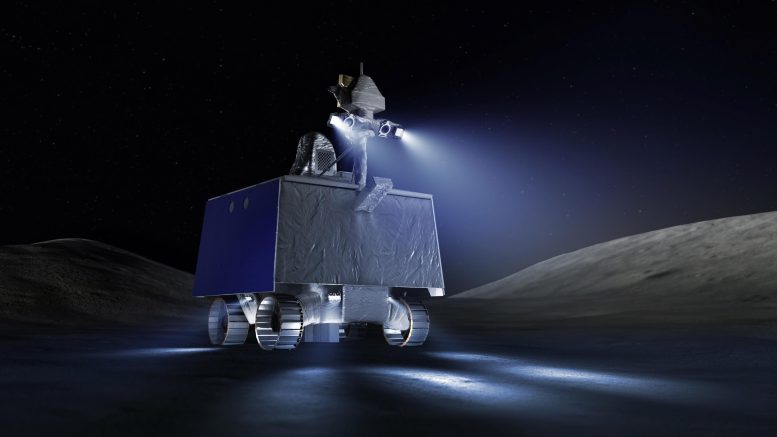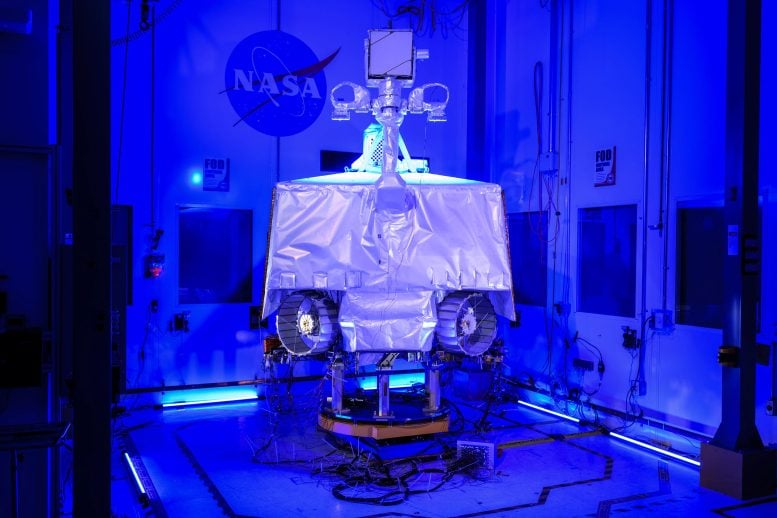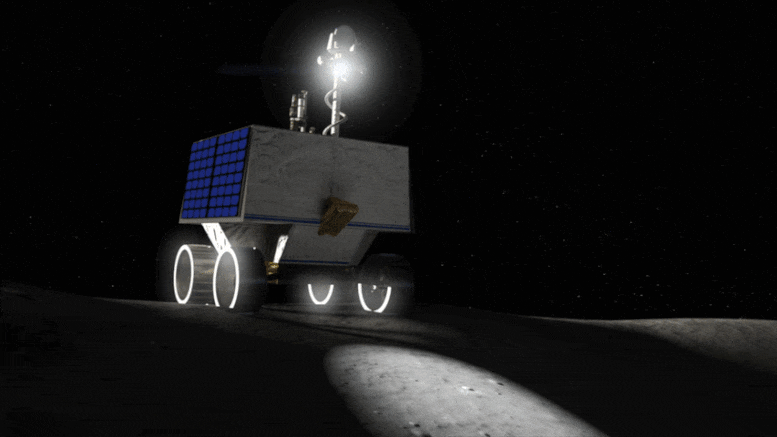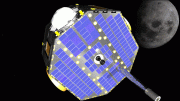
An artist’s concept of the completed design of NASA’s Volatiles Investigating Polar Exploration Rover, or VIPER. Its mission was to get a close-up view of the location and concentration of ice and other resources at the Moon’s South Pole, bringing us a significant step closer to NASA’s ultimate goal of a long-term presence on the Moon – making it possible to eventually explore Mars and beyond. Credit: NASA/Daniel Rutter
NASA announced the discontinuation of its VIPER rover project, citing cost increases and launch delays. The project’s instruments will be repurposed for future lunar missions, including the upcoming PRIME-1 and Artemis missions, which will explore lunar resources and support astronaut missions.
Following a comprehensive internal review, NASA announced on July 17 its intent to discontinue the development of its VIPER (Volatiles Investigating Polar Exploration Rover) project.
NASA stated cost increases, delays to the launch date, and the risks of future cost growth as the reasons to stand down on the mission. The rover was originally planned to launch in late 2023, but in 2022, NASA requested a launch delay to late 2024 to provide more time for preflight testing of the Astrobotic lander. Since that time, additional schedule and supply chain delays pushed VIPER’s readiness date to September 2025, and independently its CLPS (Commercial Lunar Payload Services) launch aboard Astrobotic’s Griffin lander also has been delayed to a similar time. Continuation of VIPER would result in an increased cost that threatens cancellation or disruption to other CLPS missions. NASA has notified Congress of the agency’s intent.

NASA’s VIPER – short for the Volatiles Investigating Polar Exploration Rover – sits assembled inside the cleanroom at the agency’s Johnson Space Center. Credit: NASA
Response From NASA Leadership
“We are committed to studying and exploring the Moon for the benefit of humanity through the CLPS program,” said Nicola Fox, associate administrator, Science Mission Directorate, NASA Headquarters in Washington. “The agency has an array of missions planned to look for ice and other resources on the Moon over the next five years. Our path forward will make maximum use of the technology and work that went into VIPER, while preserving critical funds to support our robust lunar portfolio.”
VIPER’s Decommissioning and Future Plans
Moving forward, NASA is planning to disassemble and reuse VIPER’s instruments and components for future Moon missions. Prior to disassembly, NASA will consider expressions of interest from U.S. industry and international partners by Thursday, August 1, for use of the existing VIPER rover system at no cost to the government.

Animation of NASA’s Volatiles Investigating Polar Exploration Rover (VIPER) on the surface of the Moon. Credit: NASA Ames/Daniel Rutter
Continuing Lunar Missions and Future Prospects
Astrobotic will continue its Griffin Mission One within its contract with NASA, working toward a launch scheduled for no earlier than fall 2025. The landing without VIPER will provide a flight demonstration of the Griffin lander and its engines.
NASA will pursue alternative methods to accomplish many of VIPER’s goals and verify the presence of ice at the lunar South Pole. A future CLPS delivery – the Polar Resources Ice Mining Experiment-1 (PRIME-1) — scheduled to land at the South Pole during the fourth quarter of 2024, will search for water ice and carry out a resource utilization demonstration using a drill and mass spectrometer to measure the volatile content of subsurface materials.
Additionally, future instruments as part of NASA’s crewed missions – for example, the Lunar Terrain Vehicle — will allow for mobile observations of volatiles across the south polar region, as well as provide access for astronauts to the Moon’s permanently shadowed regions for dedicated sample return campaigns. The agency will also use copies of three of VIPER’s four instruments for future Moon landings on separate flights.
The VIPER rover was designed to search Earth’s Moon for ice and other potential resources – in support of NASA’s commitment to study the Moon and help unravel some of the greatest mysteries of our solar system. Through NASA’s lunar initiatives, including Artemis human missions and CLPS, NASA is exploring more of the Moon than ever before using highly trained astronauts, advanced robotics, U.S. commercial providers, and international partners.









Be the first to comment on "Mission Aborted: Why NASA Pulled the Plug on Its VIPER Moon Rover"